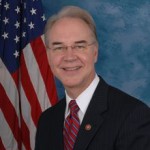A Bill to Establish a Single-Payer Health System Advances in California
 A bill has passed its first legislative hurdle to establish a government-run program of universal coverage in California. The California Senate Health Committee passed the measure 5-2. Next it will be debated by the Senate Appropriations Committee. The sticking point is how to fund such an endeavor.
A bill has passed its first legislative hurdle to establish a government-run program of universal coverage in California. The California Senate Health Committee passed the measure 5-2. Next it will be debated by the Senate Appropriations Committee. The sticking point is how to fund such an endeavor.








